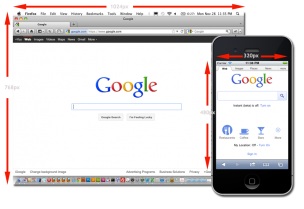It’s hard to believe that less than 25 years ago most people had never heard of the internet. Today, we engage with the web on a near constant basis, accessing websites and using apps on our phones. We are never more than a few key presses or screen taps away from the information we want, and we expect that we will be able to access that information on demand, using whatever device is available at the time.
This means that web designers face some interesting challenges. They are tasked with the job of creating sites that look great on desktops and perform well on mobiles. Google has little tolerance for websites that are not mobile-friendly, and webmasters that want to compete in the local search stakes must make sure that their sites load quickly on low-bandwidth connections and are easy to read and navigate on a huge range of different screen sizes.
Designing for Mobile
Desktop sites, and sites that are being used on tablets with a big, high-resolution display, can be quite ornate and can include a lot of text, links, and UI options. Mobile layouts tend to be more spacious and plain – for several reasons. Firstly, there simply isn’t enough space on a mobile screen to display lots of chrome, and secondly, those cluttered layouts are not touch-friendly. Mobile users don’t want to have to wait for a page to load, then accidentally tap a link when they are trying to scroll or zoom, only to be forced to re-load the page they were originally on.
Multiple Devices
Mobile users are a rapidly growing part of the web – and it’s not just smartphones and tablets that people are using for their web surfing, either. Smart watches and other connected devices are becoming increasingly popular, and they have their own challenges when it comes to usability. If you want to make sure that your website is as easy to navigate as possible, then you need to make usability a core part of its design. When it comes to web design Stroud companies such as spearsouthwest.co.uk have a lot of expertise in dealing with the challenges of mobile and connected device design and can help with this.
The era of third-party plug-ins, auto-playing videos and downloadable browser extensions being the norm is long gone. Today, web design is all about putting the information in the hands of the user – regardless of the platform they are on. This means using responsive themes, compressing images whenever possible and minimising the overall size of the page. There is no need to have separate desktop and mobile versions of your website – carefully coded CSS and HTML will be all that is required to make a page that looks great on any device, but you should test your site on as many devices as possible. If you do not cater to mobile and tablet users, then you will lose your customers to competitors that do.







Recent Comments